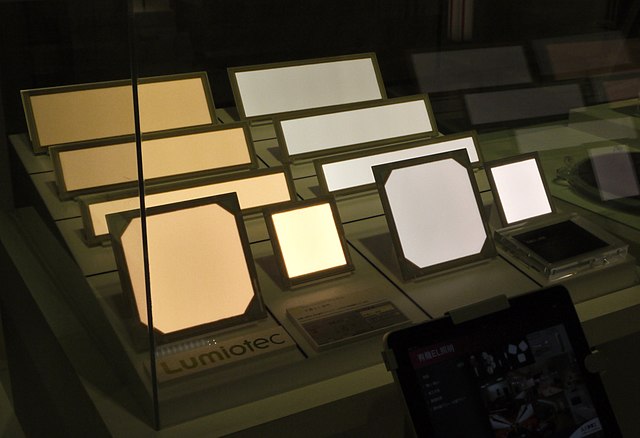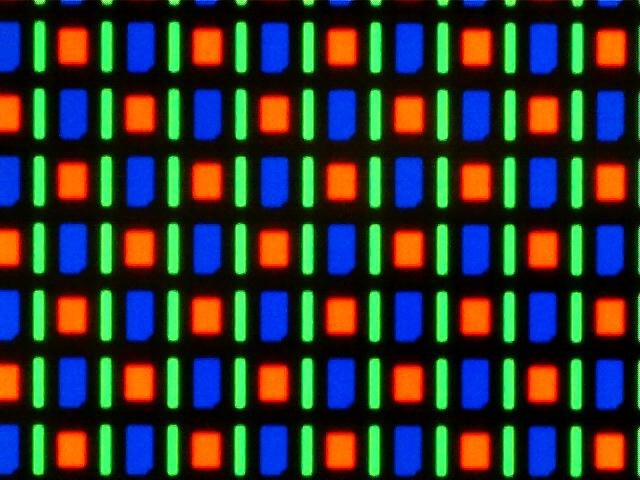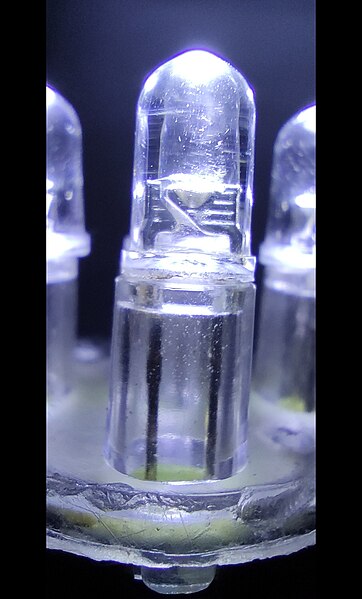An organic light-emitting diode (OLED), also known as organic electroluminescent diode, is a type of light-emitting diode (LED) in which the emissive electroluminescent layer is an organic compound film that emits light in response to an electric current. This organic layer is situated between two electrodes; typically, at least one of these electrodes is transparent. OLEDs are used to create digital displays in devices such as television screens, computer monitors, and portable systems such as smartphones and handheld game consoles. A major area of research is the development of white OLED devices for use in solid-state lighting applications.
Prototype OLED lighting panels
Light-emitting polymer (LEP) display showing partial failure
An old OLED display showing wear
Magnified image of the AMOLED screen on the Google Nexus One smartphone using the RGBG system of the PenTile Matrix Family
A light-emitting diode (LED) is a semiconductor device that emits light when current flows through it. Electrons in the semiconductor recombine with electron holes, releasing energy in the form of photons. The color of the light is determined by the energy required for electrons to cross the band gap of the semiconductor. White light is obtained by using multiple semiconductors or a layer of light-emitting phosphor on the semiconductor device.
LED in white. The LEDs in this picture are housed in "regular" cases, but there are many variants of LEDs.
A bulb-shaped modern retrofit LED lamp with aluminum heat sink, a light diffusing dome and E27 screw base, using a built-in power supply working on mains voltage
Green electroluminescence from a point contact on a crystal of SiC recreates Round's original experiment from 1907.
Close-up of a 1 watt red power led








